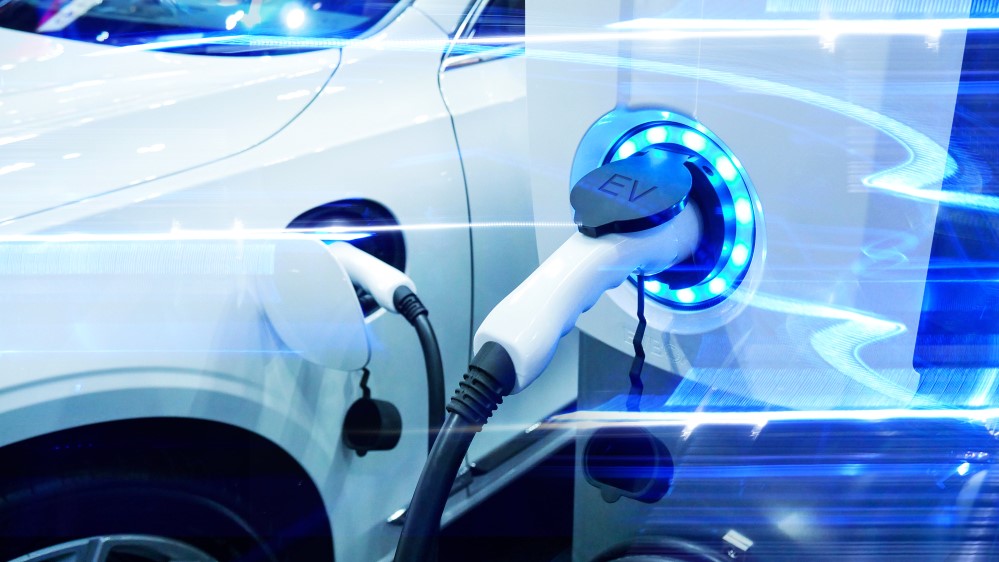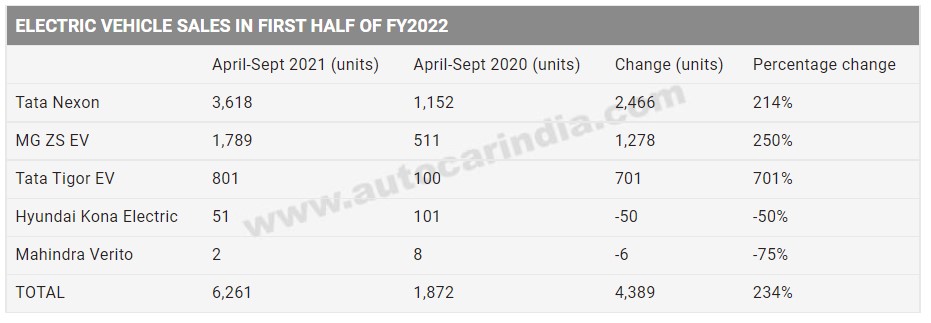Electric Vehicles in India register record growth; Tata Nexon leads the pack
Still only a minute fraction of total vehicles sold

The impact of ever-increasing awareness around EVs, rising fossil fuel prices and improvement in EV charging infrastructure can be directly linked to the higher adoption of battery-operated vehicles in the country.
With the success of two-wheelers like Ola and Ather, it is easy to assess that people are ready to change and adapt to the new technology. The same is also applicable to electric cars which have seen a staggering growth of 234% in the six months of April to September 2021.
Numbers suggest that during this period over 6261personal electric vehicles were sold in the country. This number is already way more than the total number of electric car sales for the entire FY2021.
- Best electric scooters you can buy in India right now
- A portable charger that allows you to recharge anywhere

Interestingly, among these vehicles, Tata Nexon EV had a share of 58% while others like MG ZS EV, Tata Tigor EV have a 13% market share. While Hyundai Kona EV and Mahindra Verito EV make up the rest of the numbers, both vehicles saw their market size shrink substantially.
Other side of the picture
While the sales of the top three electric cars have grown exponentially and we can see a multi-fold increase in the number of EVs sold – they are still a minute fraction of the total number of personal vehicles sold in the country.
During the same part of the fiscal year, 13,87,714 PVs were sold in the country and EVs are a mere 0.45% of the total market size. This fact alone is enough to raise a lot of eyebrows and demand answers to questions like – Even after so many schemes by both the central government and respective state governments, why are people still opting for ICE vehicles?
Do the governments need to do more? Obviously yes, while there is a lot of awareness in the metros and bigger cities, the trust level on EVs in rural India is still negligible. Among the two key reasons, one of them is the lack of infrastructure. The number of charging stations is way too less compared to the number of fuel stations spread across the country.
Get daily insight, inspiration and deals in your inbox
Sign up for breaking news, reviews, opinion, top tech deals, and more.
Secondly, the numbers suggest that the makers are still not willing to offer what consumers need. There are only a handful of Electric cards compared to the sheer variety of options available in ICE variants. Two of the three most sold electric cars in the list are also probably the cheapest electric cars in the country.
A quick check at the number of ICE cars sold under the price band of Rs. 7-8 lakh vs the number of EVs available in this price bucket is enough to tell the root cause of the problem.
Though some time back we did come across an affordable EV that wanted to be the cheapest electric car in India, however, it hardly would have any takers given how the car looks.
Since most EV brands look to either cater to the premium segment or charge a premium for zero-emission cars, the maximum number of consumers from middle-class households will remain excluded from the EV drive.
While the government claims that the price of EVs will come down in the next few years, what we need right now is participation from mass-market brands like Maruti to make any sizeable impact.
Want to know about the latest happenings in tech? Follow TechRadar India on Twitter, Facebook and Instagram!
Jitendra has been working in the Internet Industry for the last 7 years now and has written about a wide range of topics including gadgets, smartphones, reviews, games, software, apps, deep tech, AI, and consumer electronics.
